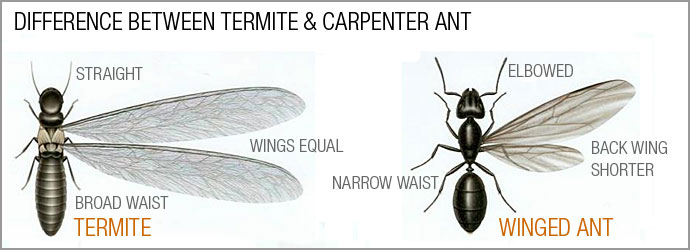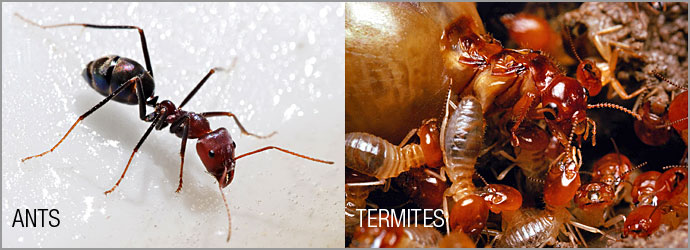 |
|
 |
Corbett Pest Identification
FAQ's | Quality Control | Licenses & Certifications | Pesticide Information | Pest Identification
Bedbugs | Carpet Beetles | Pantry & Stored Food Pests | Fleas | Ants & Termites
Flies | Cockroaches | Lice | Rats & Mice | Stink Bugs
ANTS & TERMITES


- Ants have a narrow waist with one or two joints (nodes) between the thorax and abdomen. Have elbowed antennae.
- Winged reproductive’s have four wings, with the first pair being much larger than the hind pair.
- Ants are frequently confused with termites. However termites have a broad waist between the thorax and the abdomen.
- Termite reproductive’s have four wings of equal size.
- Ants have an egg, larva, pupa and adult state.
• 6 weeks to 2 months are required for development from egg to adult.
- Ants establish new colonies by flights of winged reproductive’s and budding.
• Budding is when queen leaves nest accompanied by workers who aid in establishing new colony.
• Some of the most difficult ant species to control spread colonies by budding.
- Most ants eat a variety of foods including
• Honeydew, sugars, proteins, oils, seeds, plants and insects.
• Require Water
- Carpenter ants do not eat wood (as termites do) but excavate galleries in it to rear their young.
- Best approach to control is cleanliness. Any type of food or food particles can attract ants.
- Remove plants that can attract ants or control aphids, whiteflies and other insects that produce honeydew.
- Reduce moisture sources and leaks.
- Location of the nest is the key to control because ants are social insects.
• Individual ants can be killed without ever solving the problem.
- Nests may be in walls, behind baseboards or under a house. Some ants may nest in decayed or rotted wood in the house.
- Baits exploit the foraging and nest mate feeding behaviors
• Baits can kill foraging members as well as the queen so no other ants are produced.
• Always use fresh bait
|
 |





